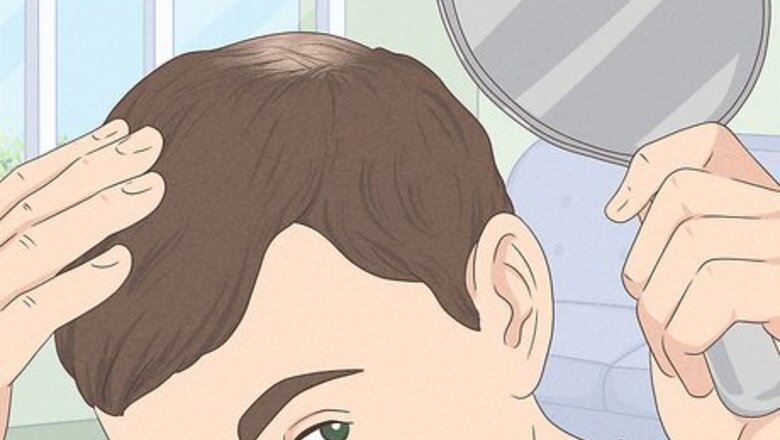
views
- Watch for gradual hair thinning on the top of your head. If you’re in the later stages of male pattern baldness, you may be able to see your scalp through your hair.
- Look for circular thinning or balding patches on the top and back of your head with a mirror.
- Keep an eye on your pillowcase and brush to note how much hair you lose. Losing more than a few dozen hairs daily indicates male pattern baldness.
Identification of Male Pattern Baldness

Watch for gradual hair thinning on the top of your head. Grab a mirror and hold it up above you so you can see the crown of your head. Check for thinning hair starting at your forehead and working its way backward. If you’re in the early stages of male pattern hair loss, you might notice some patchiness or loss of volume. If you’re in the later stages, you may be able to see your scalp through your hair. This is the most common spot that men notice hair loss. Usually, you’ll start with a receding hairline that works its way backward over time. You might also notice that your hairline recedes into an “M” shape. This is a telltale sign of male pattern baldness.
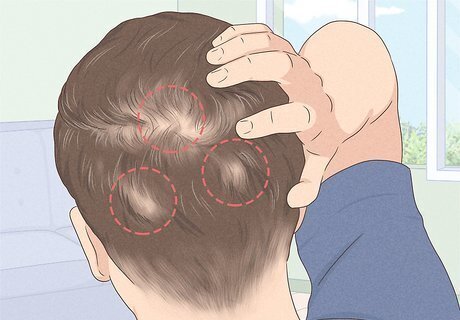
Look for circular, patchy bald spots. If the front of your hairline is fine, grab a mirror and move it all around your head. Look for any thinning or balding areas, like on the top of your head and near the back of your head. In the early stages, these spots might just look or feel a little thin; in the later stages, they could expose your scalp. Hair loss is gradual, and it can take a long time to notice that you are losing your hair. If you’re not sure, ask a friend or family member to look at your hair for you.

Look for hair on your pillow and hairbrush or comb. Some hair loss on a daily basis is normal and it typically grows right back, but aggressive male pattern balding leads to very noticeable amounts of permanent shedding. Keep an eye on your pillowcase and your brush to note how much hair you’re losing while you sleep and while you brush your hair. If you notice you’re losing more than a few dozen hairs per day, it’s probably a sign of male pattern baldness.
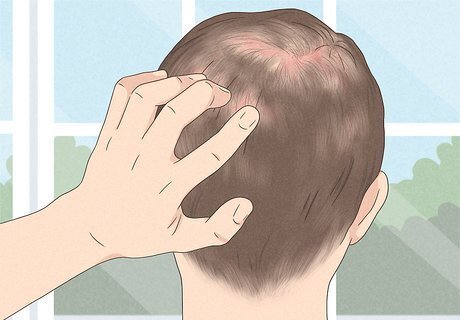
Watch for itching or pain as the hair falls out. While some people experience this with male pattern balding, if your scalp gets itchy or painful as you lose hair, you might actually be suffering from alopecia. It can also cause red, flaky bumps along your scalp, which can cause pain. If you notice anything like this, check in with your doctor, as they may be able to prescribe you medication.
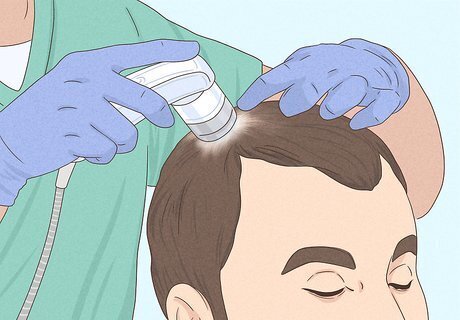
Consult with a hair loss specialist. To be completely sure if you are affected by male pattern baldness, make an appointment with a hair loss specialist, who is likely a dermatologist or physician with special training. Typical male pattern baldness is usually diagnosed based on the appearance and pattern of hair loss. However, your doctor will also ask about your extended family (particularly on your mom's side) and carefully examine your scalp under magnification (with a device called a densitometer) in order to assess the extent of miniaturization of the hair follicles. Hair analysis or a scalp biopsy are not needed to properly diagnose your hair loss, but they can help if you’re confused as to why you’re losing your hair.
Techniques to Address Hair Loss
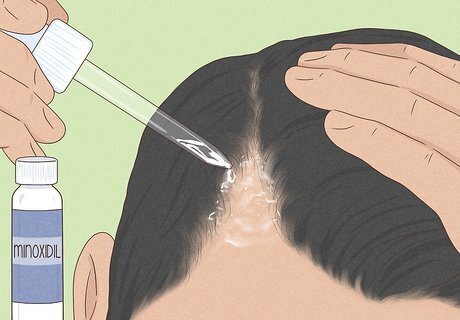
Try a topical medication to stimulate hair growth. Over-the-counter topical medications may be able to slow your hair loss and stimulate new hair growth in your scalp. Dermatologists recommend minoxidil, which you can find at most drug stores or even online. Simply apply the cream to your scalp twice a day and wait to see results. For most people, it can take up to 6 months to see any changes, although you probably won’t see a full re-growth. Minoxidil works well for some people, but other people see little to no change. Be patient, and keep using it as directed to see if it works for you. This medication can cause scalp irritation and headaches.
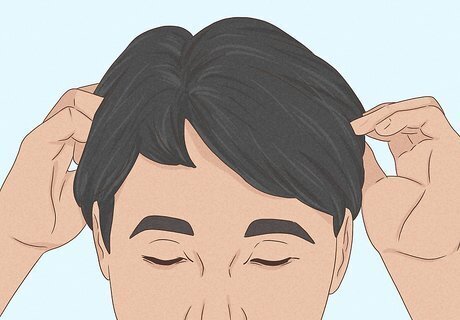
Use a wig or a hair piece to disguise your hair loss. Experts recommend trying this option first, since it’s the safest and least expensive. If you’re worried about your appearance, head out and purchase a hair piece or even a full wig. Hair pieces can add some thickness and fullness back into your hair, while wigs will disguise your entire scalp. Try to go for high quality, human hair wigs and hair pieces so it looks natural, and don’t be afraid to try out a few different styles! Buying a wig can take a little bit of trial and error. If you’ve never done it before, consider going to an in-person wig shop where you can try them on before you buy.

Take a prescription medication if it’s recommended by your doctor. Finasteride is often prescribed to men experiencing hair loss. This medication has proven to slow hair loss in 80% to 90% of men, and some even experienced hair re-growth. If you’re prescribed this medication, you’ll take a pill once a day, every day, and you can expect to see results in about 6 months. Unfortunately, this pill has to be taken long-term. If you stop taking the pill, your hair loss will return. Potential side effects include loss of libido (desire to have sex), inability to get or keep an erection, swelling and tenderness in the chest, and depression. Since these side effects can be severe, be sure to discuss them with your doctor before starting medication.

Look into hair transplants for a permanent solution. During a hair transplant, a doctor will take tiny plugs of hair from areas where it’s still growing and plant them into areas without hair. After the transplants heal, your previously balding areas will start growing the hair that has been transplanted. Most hair transplant procedures take 4 to 8 hours, and some people require multiple sessions. Usually, you will not be put under full anesthesia—instead, the doctor will numb your scalp for the procedure. Directly after the procedure, you may actually experience more thinning and hair loss, which is normal. Most patients see thicker, fuller hair in 6 to 12 months. Potential risks of hair transplants include scarring and infection. If you follow the at-home care instructions from your doctor, you can minimize those risks.
Causes and Prevention of Male Pattern Baldness

Look at male relatives on both sides of the family. Look at your father, grandfathers, uncles, and male cousins (any first and second-degree relatives) and see if they still have a full head of hair. If they don't, take note of the degree of hair loss and ask them when they first noticed losing their hair. The more relatives you see who are bald, the greater your risk of male pattern baldness. One study from 2001 suggests that young men whose fathers have male pattern baldness are more than 5 times more likely to experience hair loss than men whose fathers do not have this condition.
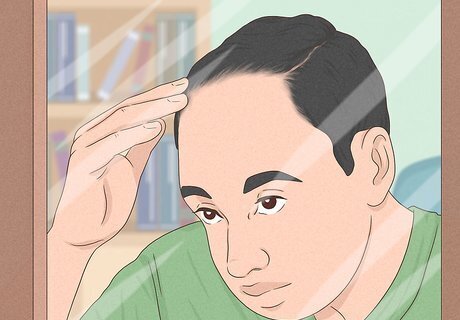
Check for signs of hair loss as you get older. The incidence of male pattern baldness increases significantly with age. In fact, your age is one of 3 main risk factors for the condition. Up to 2/3 of American men experience male pattern baldness by the age of 35, but that increases to over 80% for men older than 50 years. Although male pattern baldness can begin in early adulthood (albeit rarely), it becomes much more common with age. Sudden hair loss in a teenager or young adult is usually related to some disease, medical treatment, or toxicity. About 25% of men who suffer with male pattern baldness begin the process before the age of 21 years.
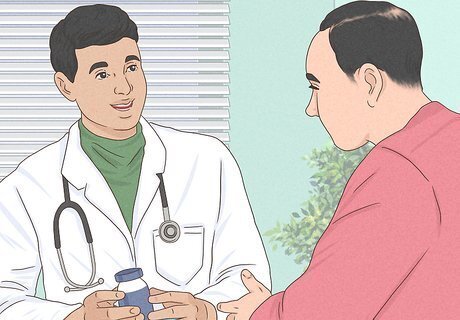
Check out the side effects of any medications you are on. Medications and supplements that are used for cancer, arthritis, depression, heart problems, gout, and high blood pressure all have the potential to cause hair thinning or baldness. If you recently started a new medication and you’ve noticed that your hair is thinning, talk to your doctor. They may be able to adjust your prescription to avoid any serious side effects. Keep in mind that hair loss caused by medication is technically not male pattern baldness. Male pattern baldness is genetic, while hair loss caused by medication can be treated by adjusting your dosages.
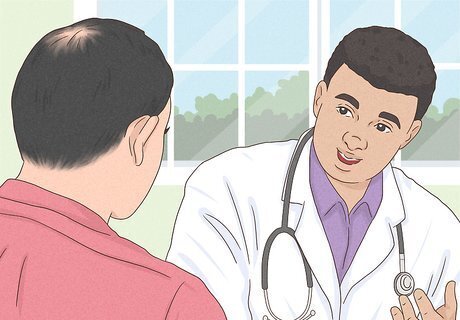
Talk to your doctor if you take steroids. Sex hormones, called androgens, may be a factor in male pattern baldness. Taking steroids can disrupt the balance of testosterone to dihydrotestosterone (DHT), which is very likely to cause hair loss. If you do take steroids and you’ve been on them for a long time, talk to your doctor about reducing your dosage or stopping altogether. Steroids increase the amount of DHT in your body. Too much DHT can shrink the hair follicles on your head, making it hard for the hair to survive.
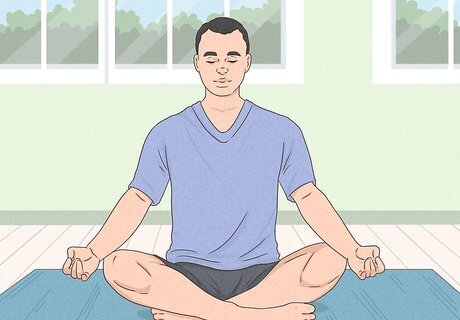
Reduce your stress levels. Some studies show that if you’re more stressed out, you’re more likely to experience hair loss. If you’ve been feeling incredibly stressed lately and you notice that it’s starting to affect your hair, try doing some stress-relieving activities, like meditation or yoga. Over time, you may be able to reverse your hair loss and even grow some (or most) of your hair back. Hair loss caused by stress is also not male pattern baldness, and it can usually be treated by lifestyle changes.

















Comments
0 comment